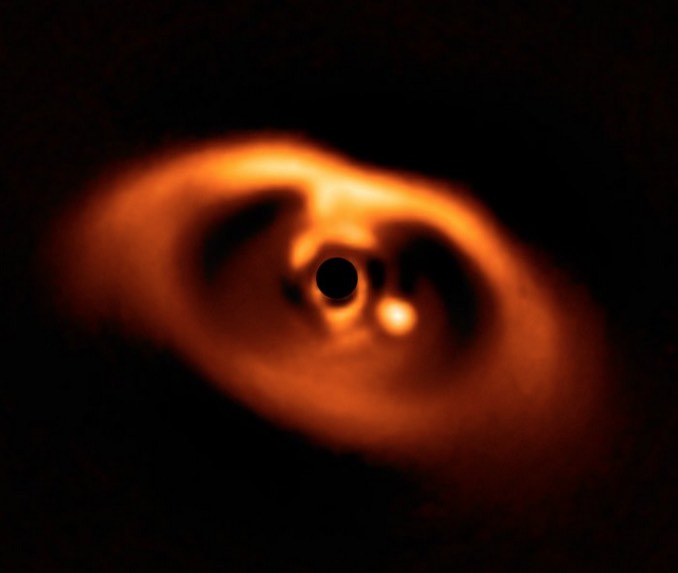
It was long theorized that pairs of planets of similar mass could share evidence around a star, as our Moon and Pluto do. Now astronomers have confirmed this is a real possibility and that they’ve found the first evidence of it.
They used Chile’s Atacama Large Millimeter/submillimeter Array (ALMA) to detect a cloud of debris that might be the building blocks of a new planet or remnants of one already formed. This cloud, with a mass roughly half that of Earth’s Moon, appears to follow the orbit of one of the exoplanets known to orbit the young star PDS 70, about 400 lightyears away in the constellation Centaurus.
The team spotted the cloud in a region of space around PDS 70 where Trojan planets are theorized to form, called the Lagrangian zone. In addition, the team also found a blob of hot dust moving in the same direction as the debris cloud, suggesting it might be the companion of a gas giant called PDS 70b.
If the pair are actual siblings, they would be the first examples of a planetary system with two planets sharing the same orbit. But it will be a while before the evidence is convincing enough to know whether they are sibling planets or whether the detection was merely a coincidence.
A critical factor in determining whether or not a planet-like object is a pair of sibling planets and not just another instance of a single planet that’s strayed from its original orbit is the degree to which it has “cleared its orbit” of other objects, and that’s where the team’s findings may be most interesting.
The fact that the pair of planets is still in relatively close orbits suggests they must clear their orbits. This might suggest that they’re in the process of forming and have not yet collided.
If they do eventually collide, they’ll be thrown out of their orbits and either removed from the system or relegated to an outer region of the system that might not host life.
The discovery is a first step toward understanding how and why Trojan planets form in other planetary systems, and more such discoveries may follow. In 2021, NASA’s Lucy probe will launch into space to study groups of asteroids that run in swarms ahead and behind Jupiter and hold clues about the Solar System’s early evolution. These are the so-called Trojan asteroids, which will be compared to the pairs of planets expected to follow Jupiter’s orbit. It will be a few years before the results of this research are available, however, and until then, we’ll have to wait for more proof of the unlikely pairing.
